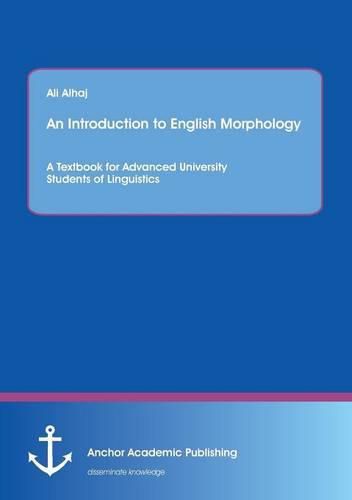Readings Newsletter
Become a Readings Member to make your shopping experience even easier.
Sign in or sign up for free!
You’re not far away from qualifying for FREE standard shipping within Australia
You’ve qualified for FREE standard shipping within Australia
The cart is loading…






This title is printed to order. This book may have been self-published. If so, we cannot guarantee the quality of the content. In the main most books will have gone through the editing process however some may not. We therefore suggest that you be aware of this before ordering this book. If in doubt check either the author or publisher’s details as we are unable to accept any returns unless they are faulty. Please contact us if you have any questions.
The experience of having taught English language and morphology - syntax in particular - for more than seven years convinced the author that students of linguistics and translation mostly need a solid grounding in the course of morphology and syntax. Once they have a basic understanding of these two important areas, they have little trouble mastering English language as a whole. Hence, both morphology and syntax are important parts of linguistic knowledge and constitute a component of student’s mental grammar. Of Course, the more courses are required of students within their discipline, the more they can benefit from the fields inside their major. Such factors often help students develop a positive attitude towards linguistics to be sensitized to the morphological and syntactic system of the language while being exposed to both morphology and syntax, and especially in an unfamiliar area. Obviously, an introductory book such as this has several limitations. First, there are entire subbranches of morphology and syntax that are not included. In terms of content, this book delimits both its scope and audience by shedding new light on a subject the problems and obscurities of which look inexhaustible. Therefore, a book of this kind is an attempt to, on the one hand, to make morphology and syntax - which usually appear to be incredible complicated at first glance - easier and, on the other hand, keep the standard high so that even postgraduate students can benefit from it; because the author strongly believes that students learn best by doing exercises, and, to this end, he has added dozens of practice exercises. In general, these require more research or analysis beyond what can be accomplished within a single classroom period. These exploratory exercises can also form the basis for short papers. Therefore, the book can be of immense help not only to students of linguistics and translation, but also to professors of linguistics and translation and research supervisors a
$9.00 standard shipping within Australia
FREE standard shipping within Australia for orders over $100.00
Express & International shipping calculated at checkout
This title is printed to order. This book may have been self-published. If so, we cannot guarantee the quality of the content. In the main most books will have gone through the editing process however some may not. We therefore suggest that you be aware of this before ordering this book. If in doubt check either the author or publisher’s details as we are unable to accept any returns unless they are faulty. Please contact us if you have any questions.
The experience of having taught English language and morphology - syntax in particular - for more than seven years convinced the author that students of linguistics and translation mostly need a solid grounding in the course of morphology and syntax. Once they have a basic understanding of these two important areas, they have little trouble mastering English language as a whole. Hence, both morphology and syntax are important parts of linguistic knowledge and constitute a component of student’s mental grammar. Of Course, the more courses are required of students within their discipline, the more they can benefit from the fields inside their major. Such factors often help students develop a positive attitude towards linguistics to be sensitized to the morphological and syntactic system of the language while being exposed to both morphology and syntax, and especially in an unfamiliar area. Obviously, an introductory book such as this has several limitations. First, there are entire subbranches of morphology and syntax that are not included. In terms of content, this book delimits both its scope and audience by shedding new light on a subject the problems and obscurities of which look inexhaustible. Therefore, a book of this kind is an attempt to, on the one hand, to make morphology and syntax - which usually appear to be incredible complicated at first glance - easier and, on the other hand, keep the standard high so that even postgraduate students can benefit from it; because the author strongly believes that students learn best by doing exercises, and, to this end, he has added dozens of practice exercises. In general, these require more research or analysis beyond what can be accomplished within a single classroom period. These exploratory exercises can also form the basis for short papers. Therefore, the book can be of immense help not only to students of linguistics and translation, but also to professors of linguistics and translation and research supervisors a